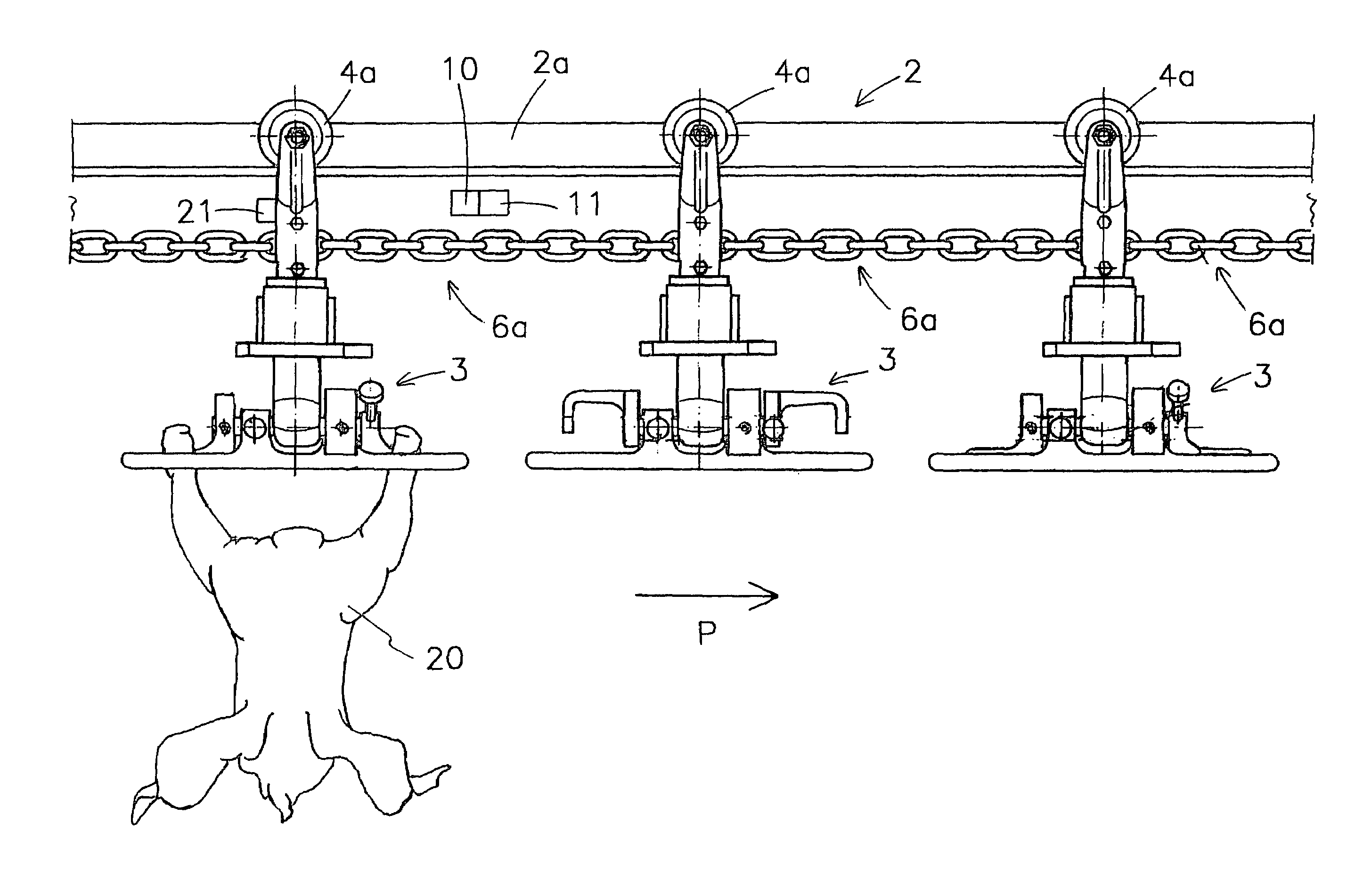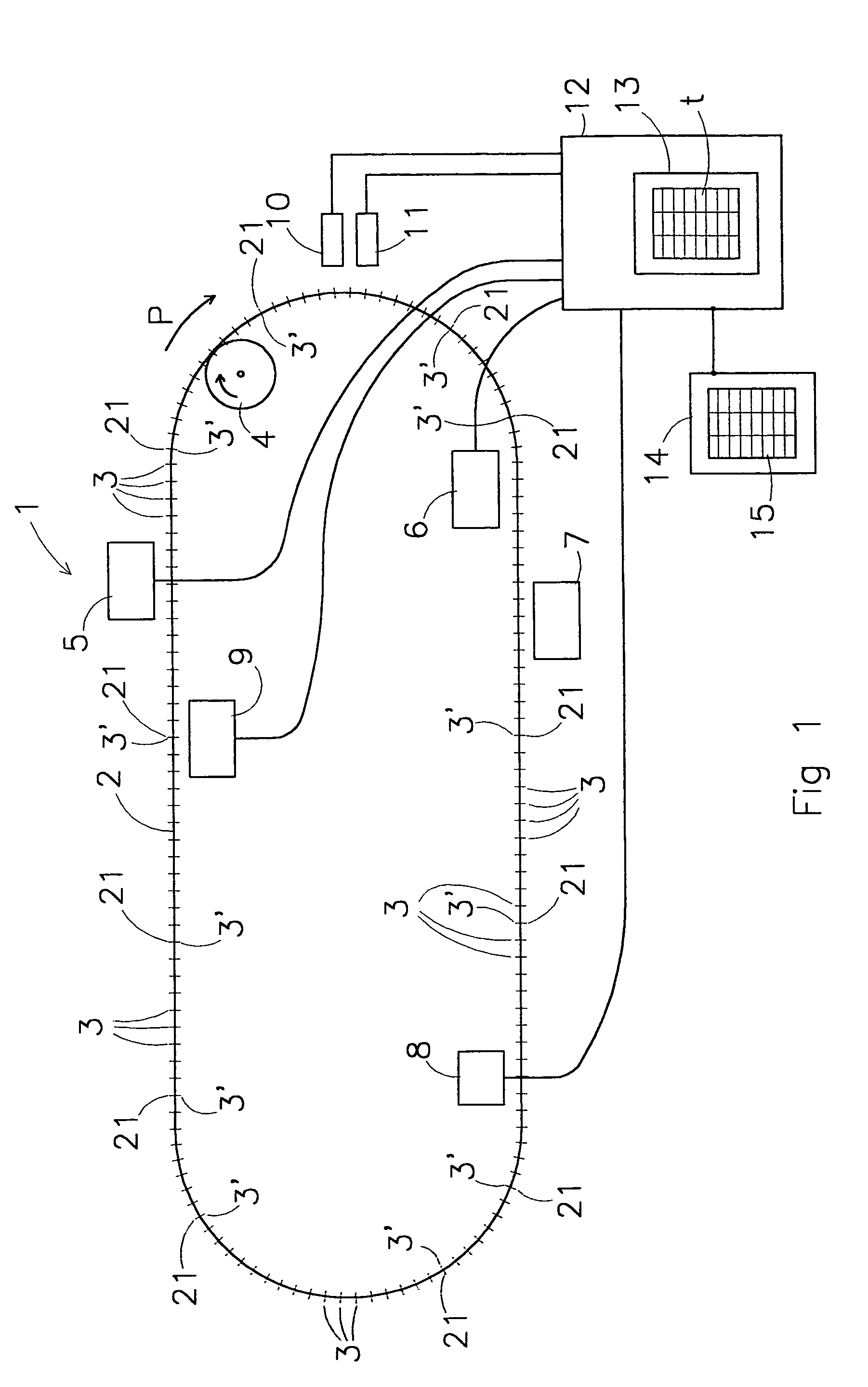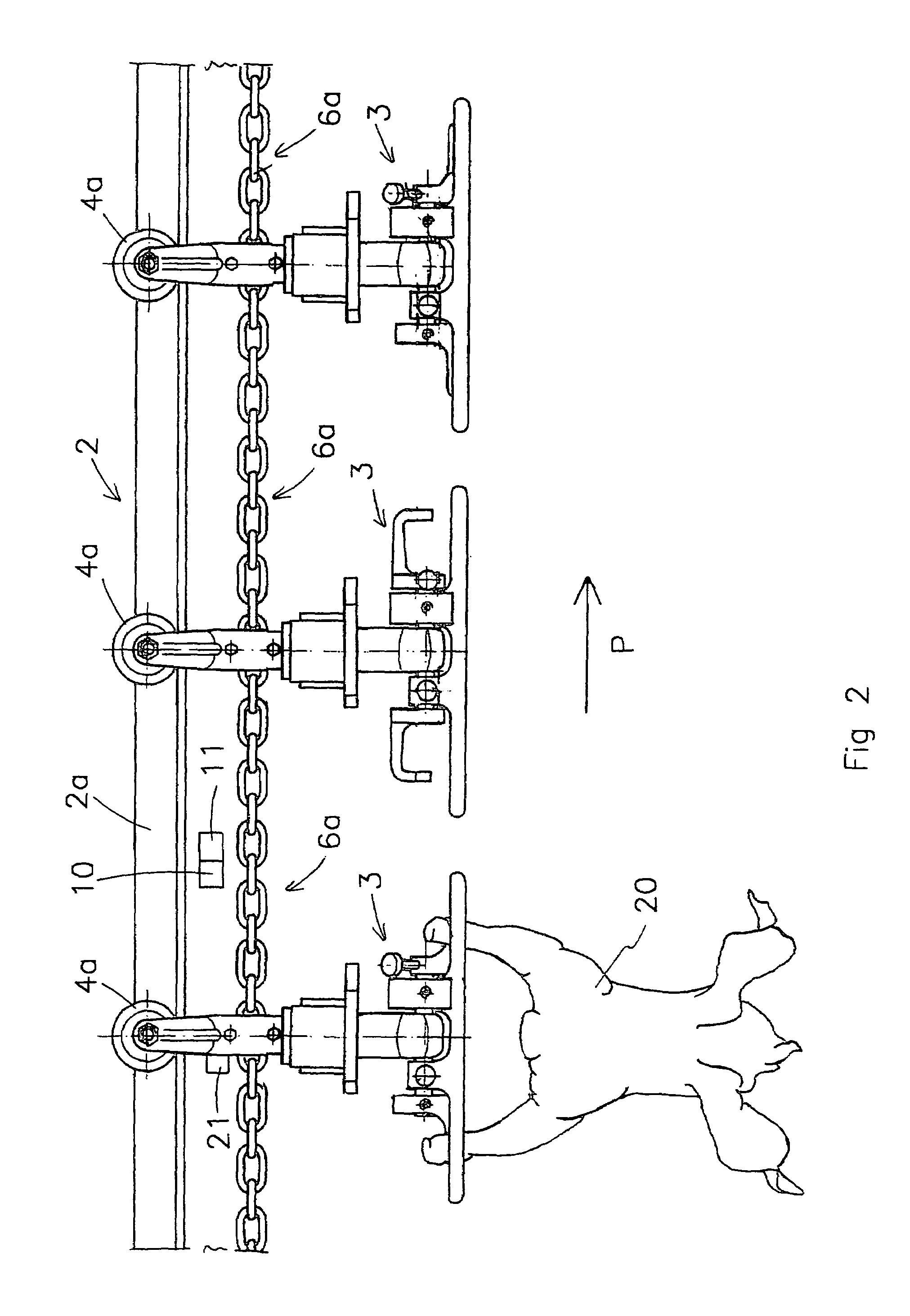Device and method for processing slaughter animals and/or parts thereof provided with a transportation system
a transportation system and slaughter animal technology, applied in the field of slaughter animal devices and methods, can solve the problems of unsatisfactory uncertainty of the position of the chain in relation to the track and therefore the location, power failure can affect the drive,
- Summary
- Abstract
- Description
- Claims
- Application Information
AI Technical Summary
Benefits of technology
Problems solved by technology
Method used
Image
Examples
Embodiment Construction
[0050]FIG. 1 shows a device 1 for processing slaughter animals or parts thereof, for example poultry.
[0051]The device 1 has a transport system with an endless track 2 and with a chain of carriers 3 placed behind one another, each being adapted to carry one or more slaughter animals or parts thereof and being interconnected and movable along the track 2.
[0052]As shown in FIG. 2, the track is formed by a guide rail 2a and the carriers 3 are movably attached to the rail 2a, for example with running wheels 4a, wherein the carriers 3 are furthermore interconnected, for example by means of a flexible connecting element such as a chain with links 6a, cable or the like.
[0053]The device 1 furthermore comprises drive means 4 for moving the chain of carriers 3 along the track 2 in the direction of transport “P”.
[0054]In FIG. 2, the carriers 3 are adapted to carry poultry 20.
[0055]In a delivery station 5, a slaughter animal 20 or one or more parts thereof are fed to a carrier 3 of the transport...
PUM
 Login to View More
Login to View More Abstract
Description
Claims
Application Information
 Login to View More
Login to View More - R&D
- Intellectual Property
- Life Sciences
- Materials
- Tech Scout
- Unparalleled Data Quality
- Higher Quality Content
- 60% Fewer Hallucinations
Browse by: Latest US Patents, China's latest patents, Technical Efficacy Thesaurus, Application Domain, Technology Topic, Popular Technical Reports.
© 2025 PatSnap. All rights reserved.Legal|Privacy policy|Modern Slavery Act Transparency Statement|Sitemap|About US| Contact US: help@patsnap.com



